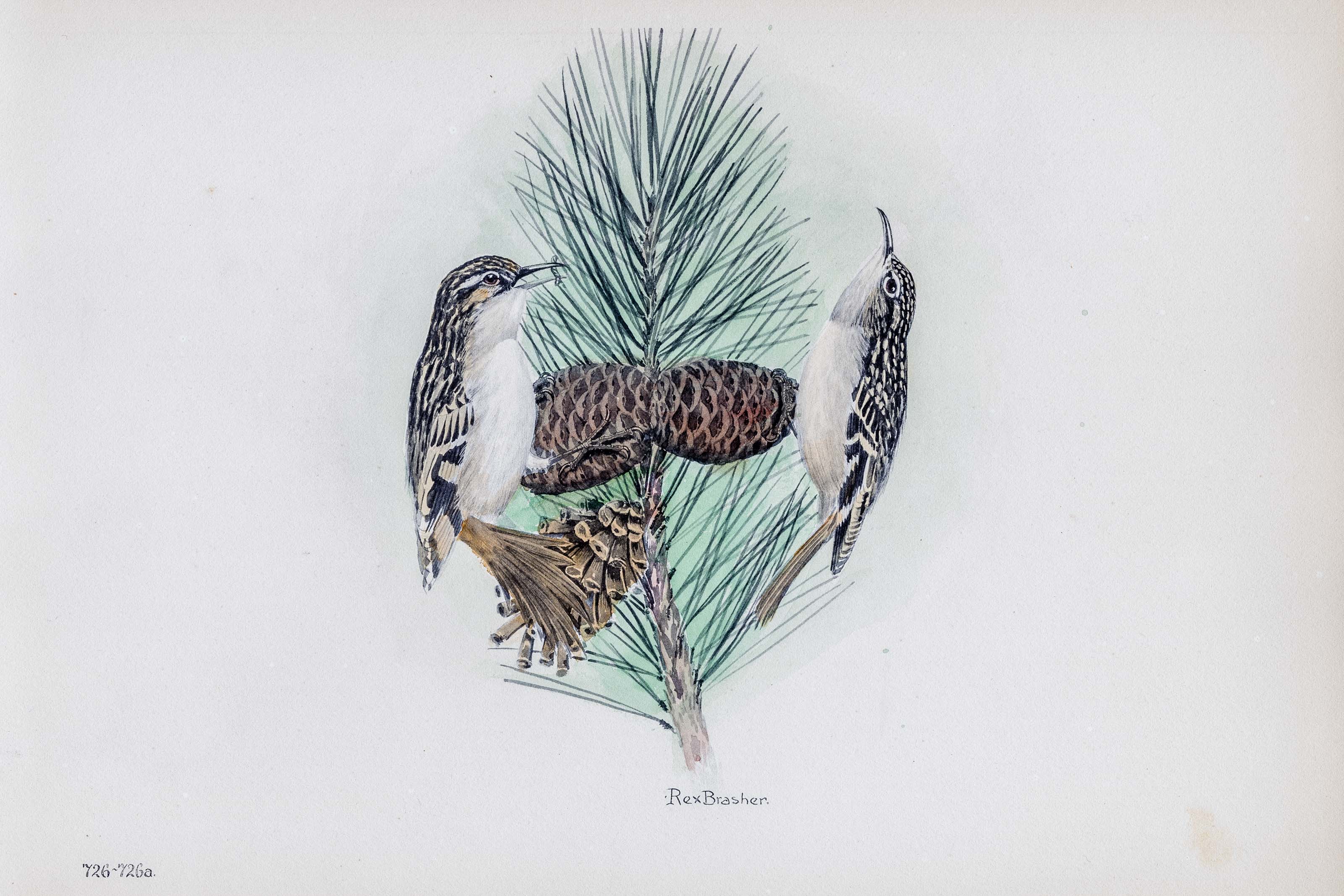
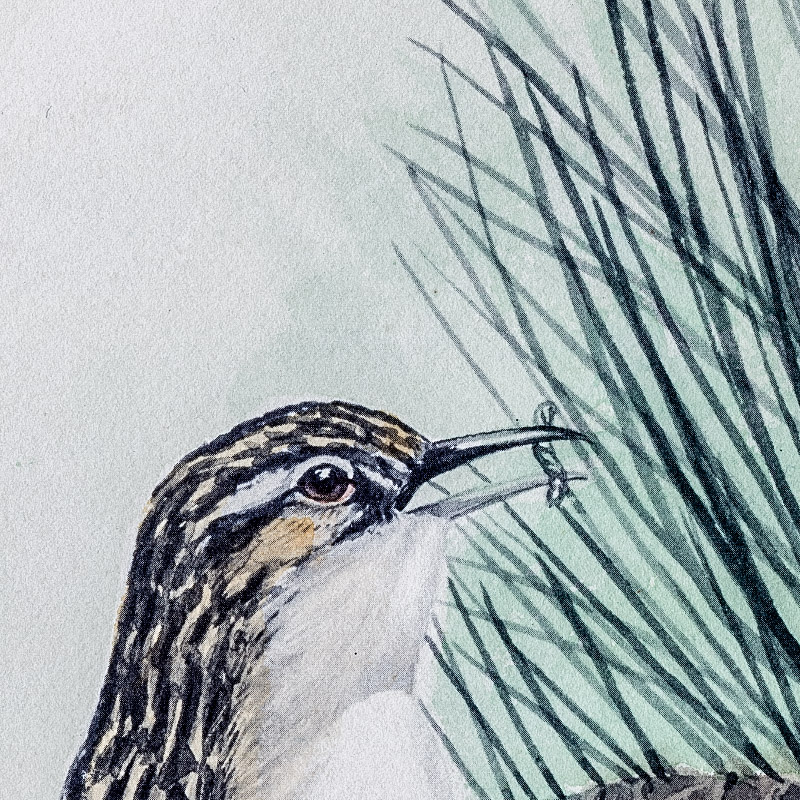
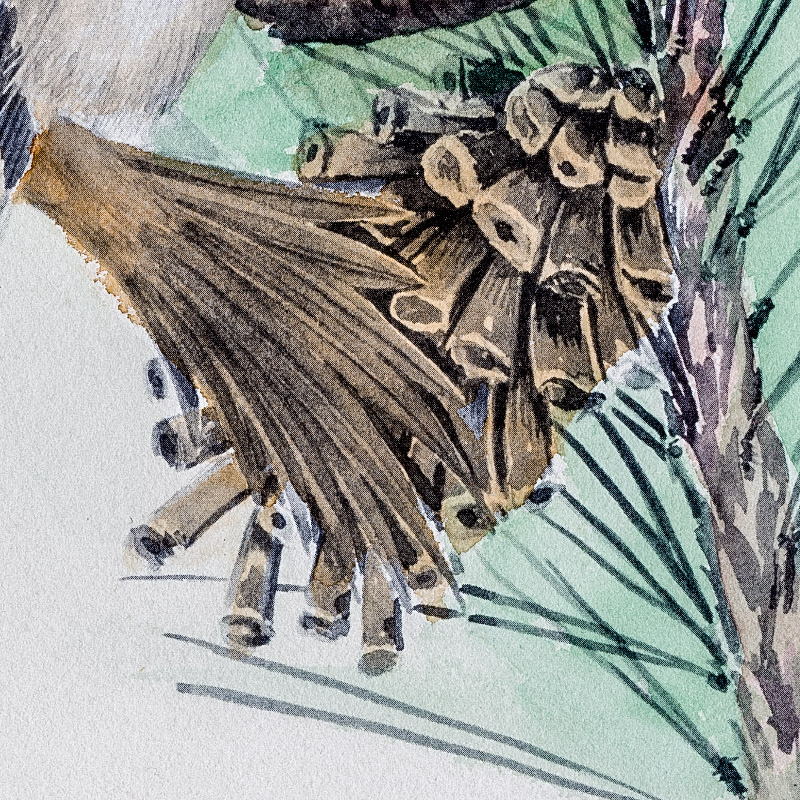
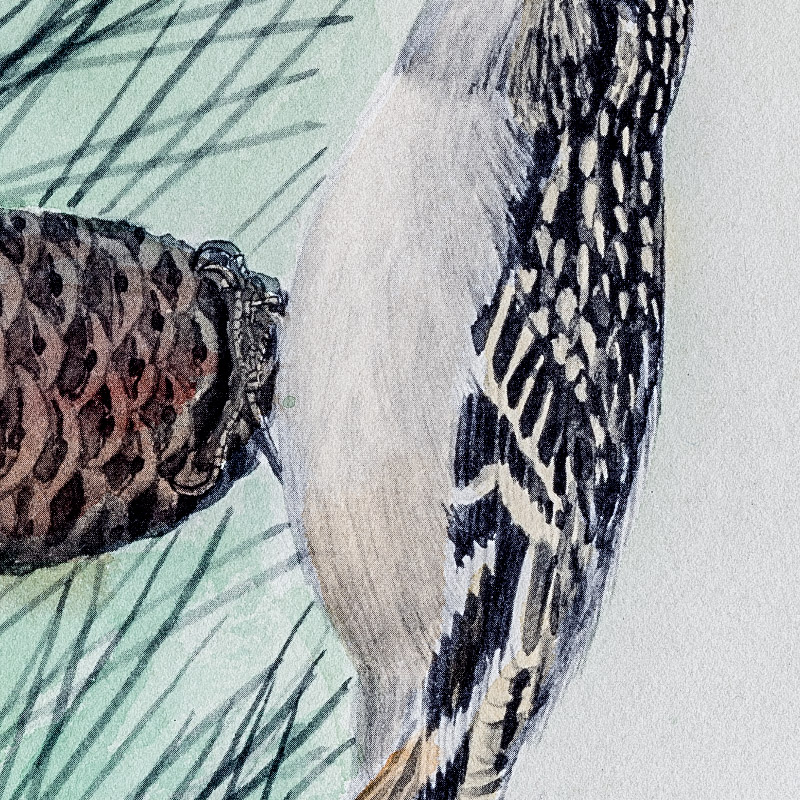
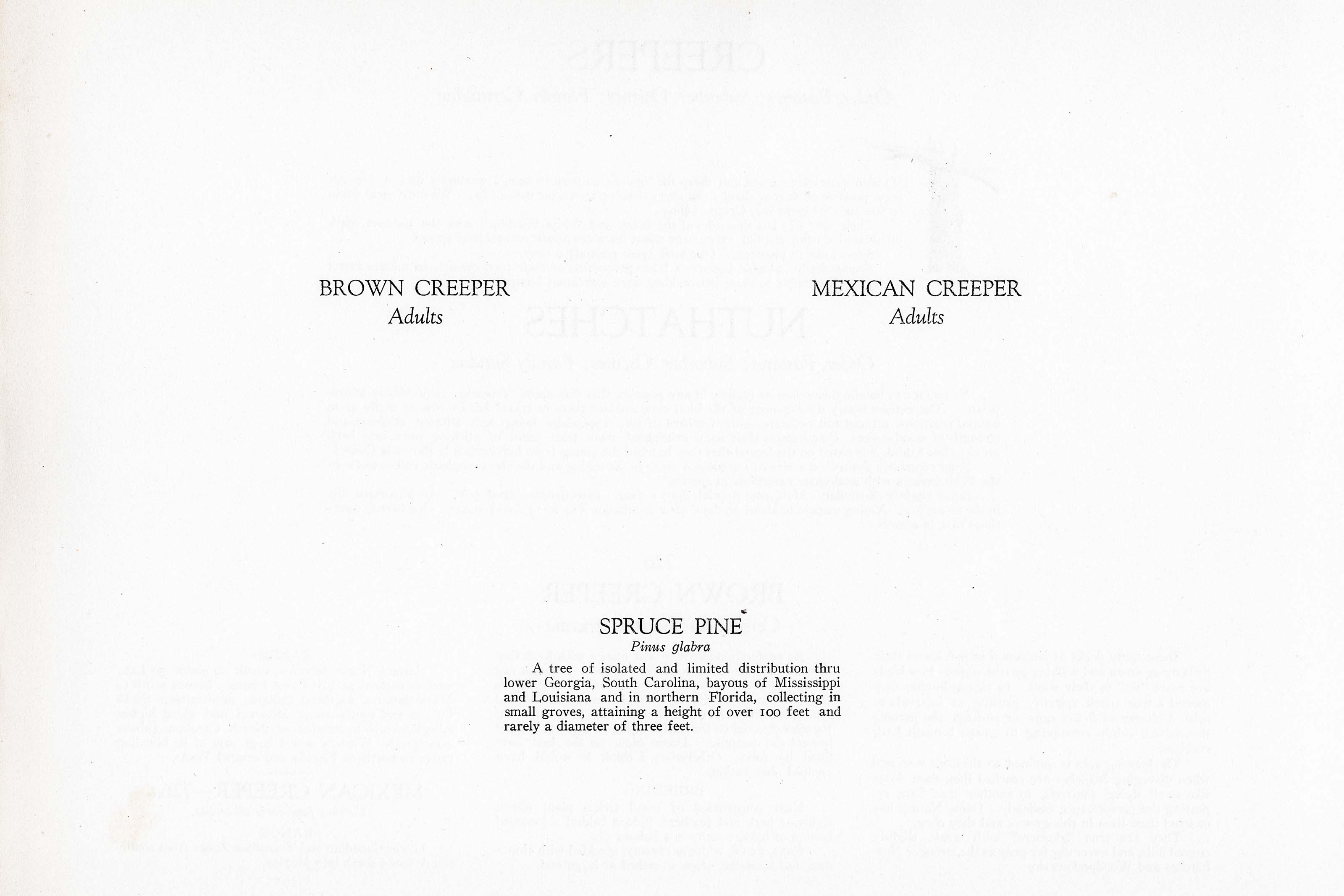
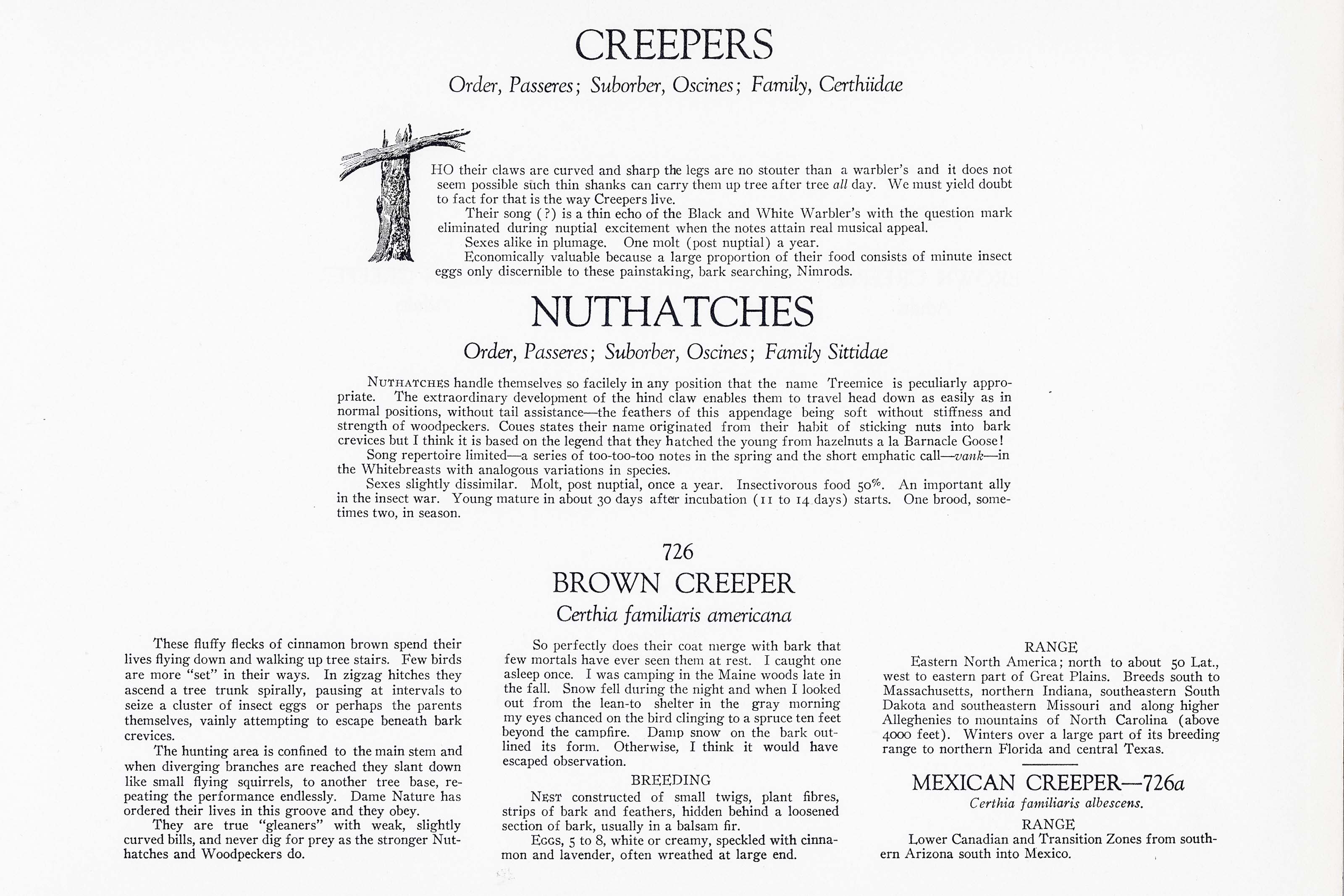

Unknown
1929
12
726-726a
A team of dedicated board members, volunteers, and student interns has published every page in Volume 9. This volume includes 360 images of paintings and lyrical descriptions of birds, now available online for everyone to enjoy anywhere in the world. This is a monumental task. Each volume requires approximately 400 hours to photograph, edit, transcribe, catalog, and publish online. We need your support to complete this work.
If you're tech-savvy, have a good eye, are meticulous with details, and love structured data, please consider volunteering by emailing us at hello@rexbrasher.org.
We encourage all bird lovers and supporters to consider a monetary donation to support our mission to make Rex's work available for everyone. You can provide a one-time or recurring donation online.
These fluffy flecks of cinnamon brown spend their lives flying down and walking up tree stairs. Few birds are more "set" in their ways. In zigzag hitches they ascend a tree trunk spirally, pausing at intervals to seize a cluster of insect eggs or perhaps the parents themselves, vainly attempting to escape beneath bark crevices.
The hunting area is confined to the main stem and when diverging branches are reached they slant down like small flying squirrels, to another tree base, repeating the performance endlessly. Dame Nature has ordered their lives in this groove and they obey.
They are true "gleaners" with weak, slightly curved bills, and never dig for prey as the stronger Nuthatches and Woodpeckers do.
So perfectly does their coat merge with bark that few mortals have ever seen them at rest. I caught one asleep once. I was camping in the Maine woods late in the fall. Snow fell during the night and when I looked out from the lean-to shelter in the gray morning my eyes chanced on the bird clinging to a spruce ten feet beyond the campfire. Damp snow on the bark outlined its form. Otherwise, I think it would have escaped observation.
NEST constructed of small twigs, plant fibres, strips of bark and feathers, hidden behind a loosened section of bark, usually in a balsam fir.
EGGS, 5 to 8, white or creamy, speckled with cinnamon and lavender, often wreathed at large end.
Eastern North America; north to about 50 Lat., west to eastern part of Great Plains. Breeds south to Massachusetts, northern Indiana, southeastern South Dakota and southeastern Missouri and along higher Alleghenies to mountains of North Carolina (above 4000 feet). Winters over a large part of its breeding range to northern Florida and central Texas.
Lower Canadian and Transition Zones from southern Arizona south into Mexico.
A tree of isolated and limited distribution thru lower Georgia, South Carolina, bayous of Mississippi and Louisiana and in northern Florida, collecting in small groves, attaining a height of over 100 feet and rarely a diameter of three feet.